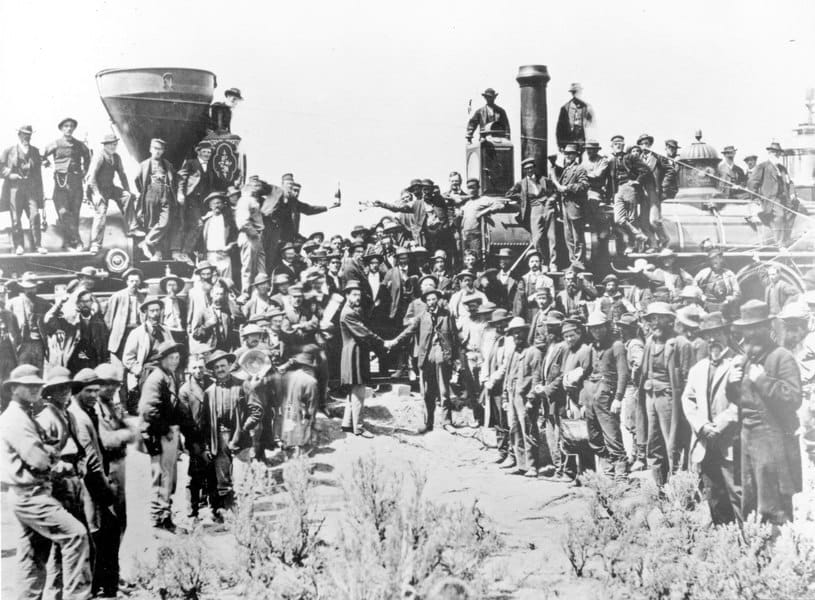150 Years On, the Transcontinental Railroad Was the Original Public-Private Partnership
PROMONTORY POINT, Utah, May 10, 2019 – Think of the transcontinental railroad as the original public-private partnership. The linkage of the Union Pacific Railroad and the Central Pacific Railroad 150 years ago today – at this desolate spot here in northern Utah – marked a confluence of engineering

PROMONTORY POINT, Utah, May 10, 2019 – Think of the transcontinental railroad as the original public-private partnership.
The linkage of the Union Pacific Railroad and the Central Pacific Railroad 150 years ago today – at this desolate spot here in northern Utah – marked a confluence of engineering might, labor force logistics, private capital and federal grants of rights-of-way.
The drive to link the American continent via rail officially took root on July 1, 1862, with the enactment of the Pacific Railroad Act. It was signed by President Abraham Lincoln, who favored infrastructure improvements such as railroads and telegraphs. Lincoln also signed the Land Grant Act in that same year.
In addition “to aid in the construction of a railroad and telegraph line … to the Pacific Ocean,” the act secured these infrastructure improvements to the military. Passed at the height of the Civil War, the law also symbolically sought to unite the nation and continent together.
Of the two railroads that joined at this point on May 10, 1869, the California-based Central Pacific has already been chartered in California in 1861. The 1862 Railroad Act officially chartered the other railroad, Union Pacific, which started construction in December 1863 in Council Bluffs, Iowa.
Here’s the public-private part: The transcontinental railroad was financed by land grants of 10 square miles (and later 20 square miles) for every mile of track laid, back n an alternating pattern, and also by government railroad bond and private investment.
Although the ceremonial “golden spike” was hammered in just shy of 1 p.m. MT on May 10, each of the two railroads had to straighten, correct and otherwise “clean up” their work to quality for land grants and bond payments.
All told, 1,776 mikes of track were laid from Council Bluffs to Sacramento, California. The record of 10 miles of track laid in one day was recorded on April 28, 1869, only 14 miles from here.
Chinese laborers dominated the construction of the railroad, with an estimated 15,000 to 25,000. There was also a strong Irish contingent of 10,000 to 12,000 laborers, plus between 3,000 and 4,000 Latter-day Saint workers, and between 2,000 and 3,000 Civil War Veterans.
The celebration set to occur here later today is also apparently the first Golden Spike re-enactment to include significant acknowledgement of the Chinese railroad workers.










Member discussion